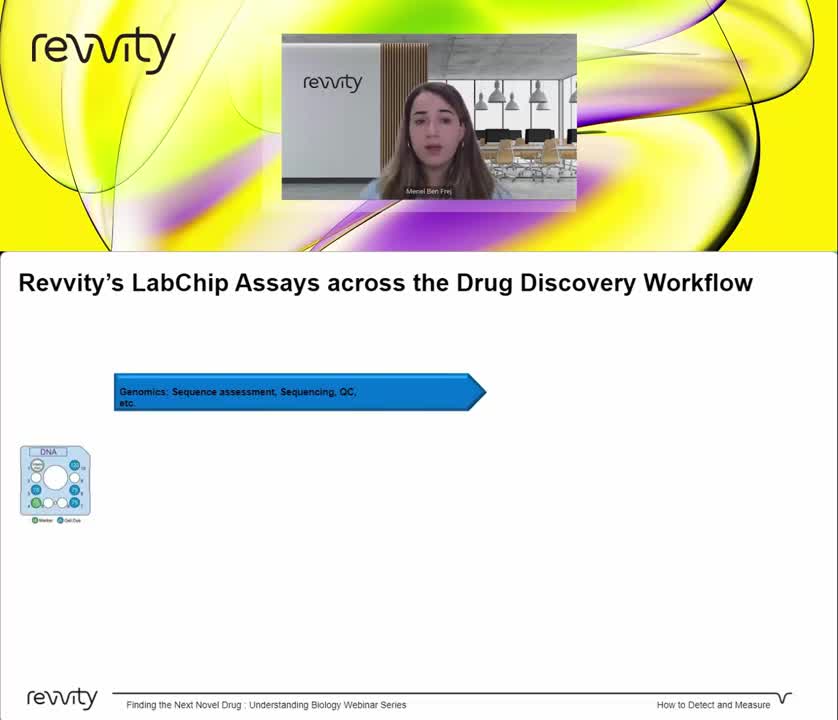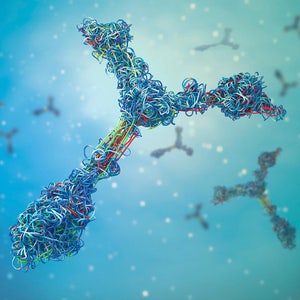
Buoyed by the scientific advances of the 21st century, in-depth proteomics and genomics analyses are now routine and indispensable components of life sciences research. Researchers rely upon in-depth “-omics” analyses in academic, industrial, and clinical settings to probe cellular processes, develop drugs, and inform medical decision making. No matter the application, data quality is determined by how well biomolecules are separated and the detection sensitivity of the instrument. As such, researchers need sensitive and robust means of separating and characterizing biomolecules such as DNA, RNA, and proteins.
Microfluidic electrophoresis has emerged as a powerful method for carrying out such analyses. Benefits of using microfluidic systems include improved separation efficiency and sensitivity, faster run times, lower reagent consumption, and consolidation of multiple steps within a single microfluidic chip. Furthermore, the small size of microfluidic chips means these systems occupy less space and are cheaper to produce.
Microfluidic chips offer high functionality and flexibility
By virtue of their micron-scale microchannels, microfluidic chips can combine multiple steps and operations onto a single platform with a small footprint. This simplifies and shortens experiments, decreases sample handling, and increases reproducibility. Chips are specifically designed for different applications such as proteomics or genomics analyses, offering users a high measure of flexibility and cost-savings.
In the context of separating biomolecules, microfluidic chips integrate three basic steps:
- Sample sipping – the sample flows into the chip and mixes with appropriate markers and stains the samples
- Sample injection – the sample is injected into the separation channel, often achieved via electrokinetic methods mediated by a high voltage power supply which creates the electric field
- Separation – biomolecules separate based on electrophoretic mobility as they travel through the separation microchannel driven by a high voltage power supply before flowing through the detection window of the chip
Microfluidic chips incorporate dedicated wells and microchannels for reagents such as stains and markers, eliminating the need for many pre-processing steps. The chip’s microchannels, which are typically between 1–50 µm in width, combined with other components and design elements allow for precise processing of extremely low volumes of liquid. This helps preserve precious samples while decreasing liquid handling, reagent consumption, and waste. Runtimes are very fast, with separation and detection occurring within ~1 minute.
Applications of microfluidic electrophoresis in proteomics and genomics
Because microfluidic electrophoresis leverages the same principles as traditional electrophoretic separation methods, it is well suited for the separation of proteins and nucleic acids. Gains in separation efficiency and sensitivity enable researchers to use this method for detecting and characterizing small changes in size or charge, while also furnishing access to characterization of large proteins and nucleic acid strands. The wide dynamic range of these systems provides researchers with the flexibility to carry out proteomics and genomics studies including characterizing post-translational modifications, building NGS libraries, discovering drug targets, sequencing DNA, and verifying CRISPR gRNA constructs.
Menel Ben Frej, PhD, who leads microfluidic and electrophoresis systems at Revvity as NPI and Assay Development Manager for Microfluidic Technologies, recently spoke about the LabChip platform.
To hear her detail the performance, capabilities, and applications of LabChip instruments, watch the video below.

Revvity’s capillary electrophoresis solutions enable researchers to do more with less
While the advantages of microfluidic electrophoresis may speak for themselves, researchers need more to realize the benefits. Microfluidic chips should be offered in a variety of configurations, have reliable and tunable injection methods, and support application-specific protocols while being compatible with automated liquid handlers. Instruments must have high sensitivity, be robust yet easy to use, and amenable with high-throughput studies. Further considerations include the ability to integrate with automated end-to-end systems and compliance with GMP standards.
Revvity’s LabChip™ microfluidic electrophoresis platforms do all this and more. They provide highly sensitive and flexible instruments with dedicated portfolios for proteins, nucleic acids, and gene therapies. LabChip instruments have wide dynamic ranges (e.g., 20–6,000 nucleotides for RNA), high sensitivity (e.g., LOD of 10 pg/µL for DNA), and can be used in GMP settings as they are 21 CFR Part 11 compliant. They have low- and high-throughput capacity, and can be integrated into automated workflows. Meanwhile, pre-developed assays and robust software with multiple data display options mean that LabChip is easy to use and can offer solutions for both R&D and QC applications.











































